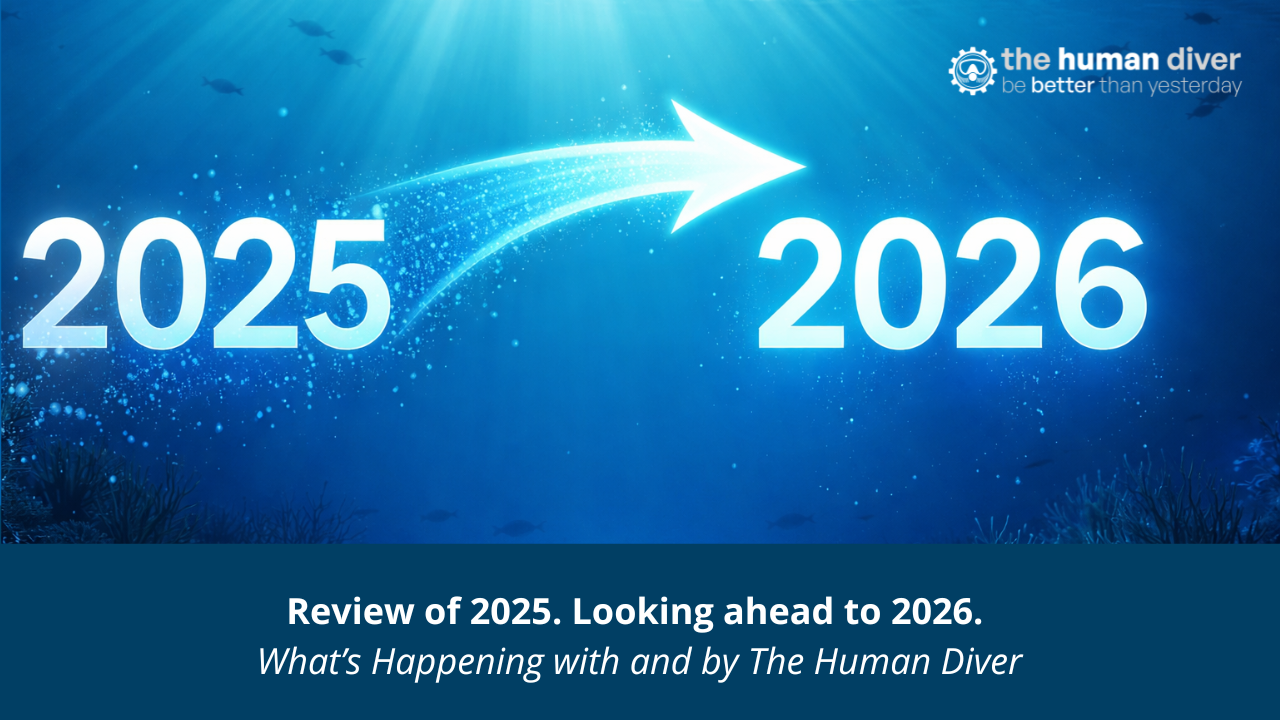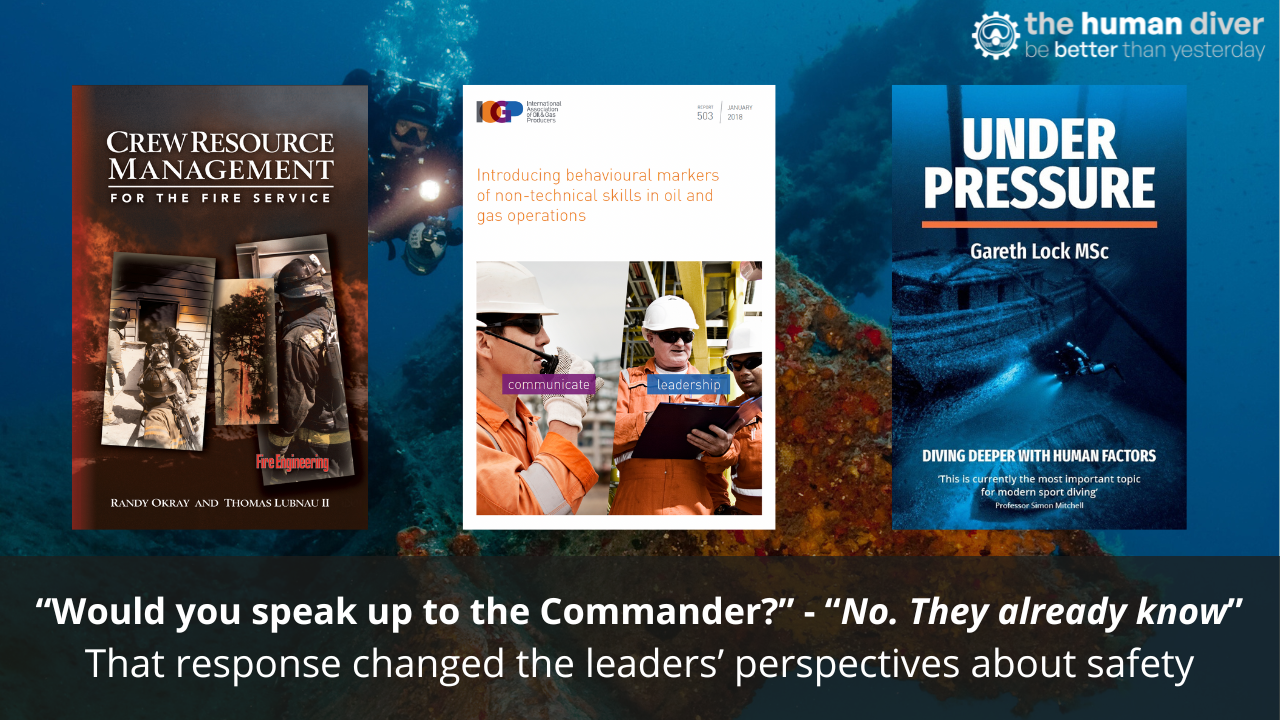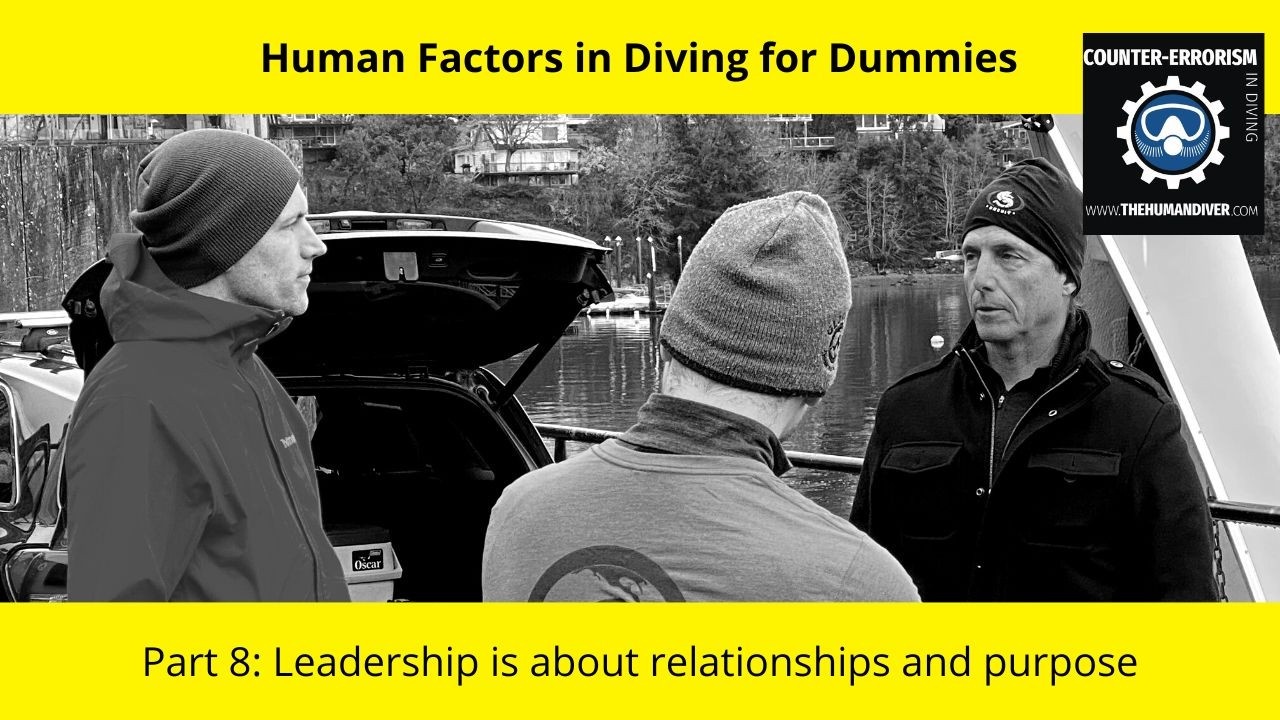
HF in Diving for Dummies: Part 8: Leadership is about relationships and purpose
Nov 05, 2022It’s easy to think that unless you’re a dive guide or instructor that leadership doesn’t apply to you but that’s not true, everyone is a leader at some point. A leader is someone who understands why everyone is there, can communicate it in a clear manner so that others understand it to, and then help everyone work collaboratively to achieve that aim. Importantly, while they understand what the aim is, they don’t necessarily need to have all the skills to achieve it.
What does this mean for us as divers? For dive guides and instructors it’s fairly clear. Most professional divers are there to share their love of diving with others, and as an unsaid goal, to do it safely. They do this by deciding what the plan is for the day and communicating it to the other divers.
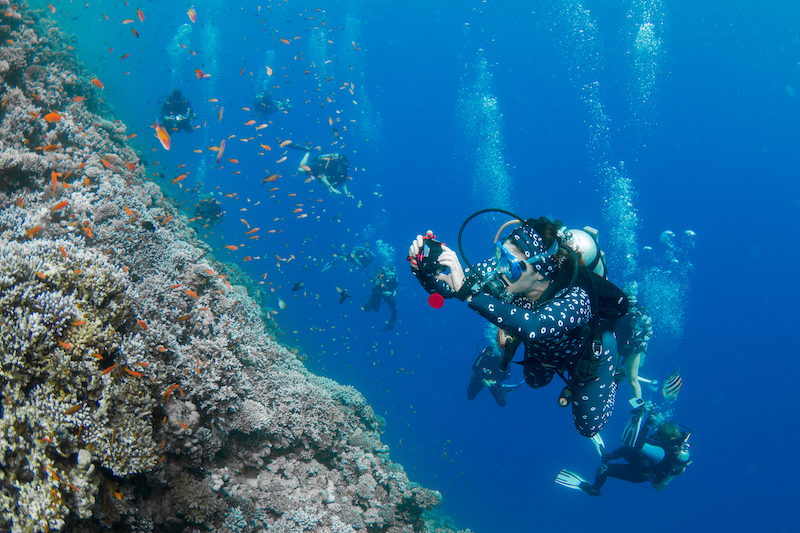
- A guide will explain the dive site, perhaps help with equipment and getting in and out of the water and sometimes even get in the water to directly guide people around and find the ‘things’ that the divers may not find themselves or would struggle to do so.
- An instructor will set the schedule, explain what they are looking for from their students and (hopefully!) debrief afterwards to help the students learn and improve, also importantly, help the students improve themselves as an instructor. If they’re good leaders, they’ll also remind people why they’re there, not just what they’re doing. They’ll try and keep each individual motivated and able to complete their role. This in turn helps the individuals pull together as a team to help each other. And that frees up capacity so that everyone can complete the task. They explain that there is a common purpose, continuous improvement, and it is this approach that creates the environment where feedback and improvement is the norm.
What does leadership look like in practice?
I’ve seen some great leadership recently from an instructor working in a dive centre. He is fairly new to the centre (and a relatively new instructor) but his experience in other leadership roles is showing. My friend had explained to me previously about the problems the dive centre had been having with maintaining and replacing their equipment. He is driven by the belief that diving needs people to stand up and speak when things aren’t right (such as sub-standard or unserviced equipment). In conversation with another colleague, he explained to them that they can’t keep quiet about something that’s unsafe and that they have a responsibility to their customers. He’s able to give them lots of examples from his old job about why this is important and what can happen if people don’t say anything. Because he role models this behaviour himself (refusing to dive or allow customers to dive if the equipment isn’t working perfectly), it helps the other members of staff see that it’s ok to speak up. He’s building the strongest culture of psychological safety in the dive centre that he can, despite being ‘just’ an instructor, not a manager. In this case, the plan is to get everyone diving safely. He has the belief that this is possible and helps allow others to achieve this, often sacrificing his own needs to help others achieve theirs.
What about leading in buddy pairs or ad hoc teams?
As a buddy pair or ad hoc team, it can be less clear. Generally, most buddies agree on their route, depth, time, waypoints etc beforehand. An experienced diver will notice things that others might miss, so may end up taking the lead, even if there’s no formal agreement. A good leader will again be guiding people towards the reason why they’re there; most likely having a fantastic dive experience which is enjoyable and safe.
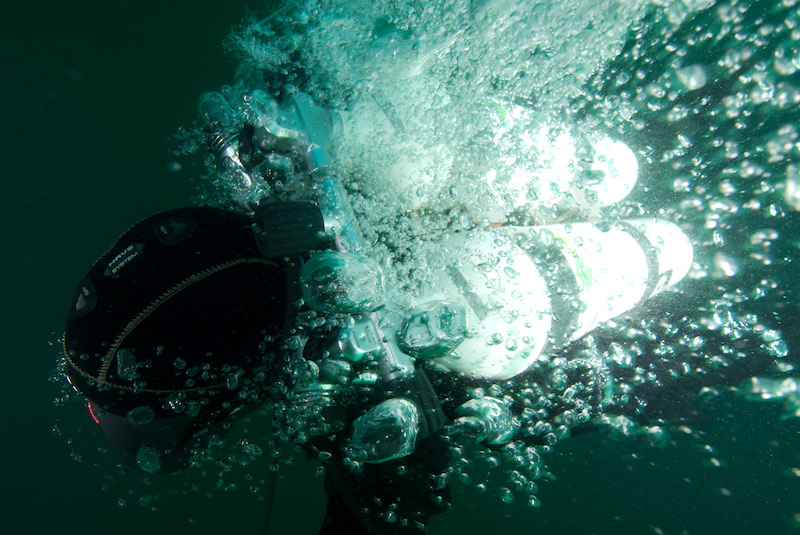
Destructive Goal Pursuit
However, not all leadership is positive. Unfortunately in the dive industry, there are many cases of sub-optimal leadership. This can occur when a leader gets task focused and loses sight of the individuals and the team. If this happens and shapes the direction of the dive or course to end up with an adverse event, this can be described as ‘destructive goal pursuit’. I see this most frequently on dive courses when the instructor is so focused on getting the students to complete each skill that they forget they are teaching human beings who have other needs such as being warm enough, not getting too tired and feeling positive about the experience! They have lost sight of the reason why they are really there and are no longer really operating as a leader. The goal becomes ticking the boxes rather than looking after their team, their learning team, of which they are the leader of.
Role Modelling
So what are good leadership behaviours that we can role model? Making sure everyone is aware of the reasons why they’re there is possibly the most important. It’s really easy to forget this when everyone starts getting fixated on their own role, but it’s good to be able to step back and make sure everyone knows why they’re doing what they’re doing. If the aim of the dive is to photograph a wreck, then make sure the team remembers why they’re doing that- maybe it’s to make a guidebook, or simply to be able to share it with people who haven’t dived there but whatever the reason, everyone needs to know it. This really helps keep everyone focused and motivated; true leadership behaviour. By having a clear ‘why’, it is easier for the team to question why something is being done a certain way - to challenge the “We’ve always done it this way”!
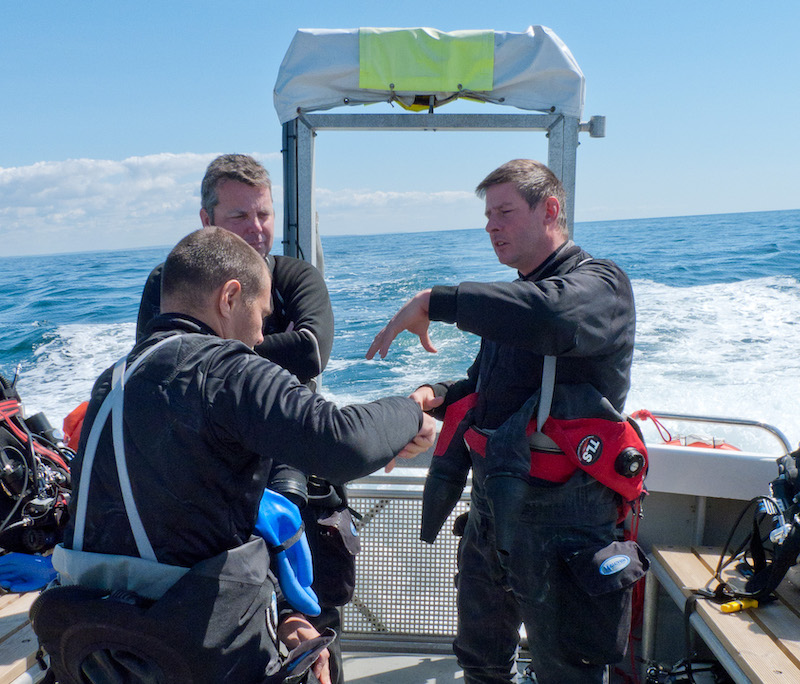
Listening - the power of feedback
Leaders need to listen to their teams. Whether that’s just a buddy pair or a whole dive centre, a good leader will take on board any comments, criticism or praise and make sure it’s acted on. That might be just passing on information to the right person, it might be making a big change of dive site, equipment, team members etc but it also might require them to change their own behaviours. A leader also needs to help build a culture of psychological safety, to allow the team to communicate well. Communication is a critical skill and is closely linked with effective leadership because an effective leader will set the tone. Sometimes a more direct, “I tell you” method of running things is needed, other times the leader can step back and let the team get on with things. The bonus of the second way is it frees up the leader to really see what else is going on, giving them greater situation awareness. Leadership is dynamic and situational.
Leadership is not something that comes naturally to most people. It takes conscious practice and a clear understanding of why you are doing what you are doing and where you’re trying to get to - whether that’s sharing the underwater world with new divers, encouraging environmental change or exploring new places. It also needs an effective team to help the leaders improve - if the leader can create the right environment, then everyone improves because feedback is shared in a manner which encourages development and not negative, critical behaviours.
Summary
In summary, if you find yourself in a leadership position, make sure you know why everyone is there, what the team’s aim is, what needs to be said to communicate the aim and how you can play your part to encourage others to participate. A leader's role is to help people reach that goal but not get over-focused on it, each individual needs to be supported to allow them to help the team. Finally, a leader in the diving environment should make sure everyone in the team has a common purpose - continuous improvement.
Jenny is a full-time technical diving instructor. Prior to diving, she worked in outdoor education for 10 years teaching rock climbing, white water kayaking and canoeing, sailing, skiing, caving and cycling, among other sports. Her interest in team development started with outdoor education, using it as a tool to help people learn more about communication, planning and teamwork.
Since 2009 she has lived in Dahab, Egypt teaching SCUBA diving. She is now a technical instructor trainer for TDI, advanced trimix instructor, advanced mixed gas CCR diver and helitrox CCR instructor.
Jenny has supported a number of deep dives as part of H2O divers dive team and works as a safety diver in the stunt industry.
If you'd like to deepen your diving experience, consider taking the online introduction course which will change your attitude towards diving because safety is your perception, visit the website.
Want to learn more about this article or have questions? Contact us.



